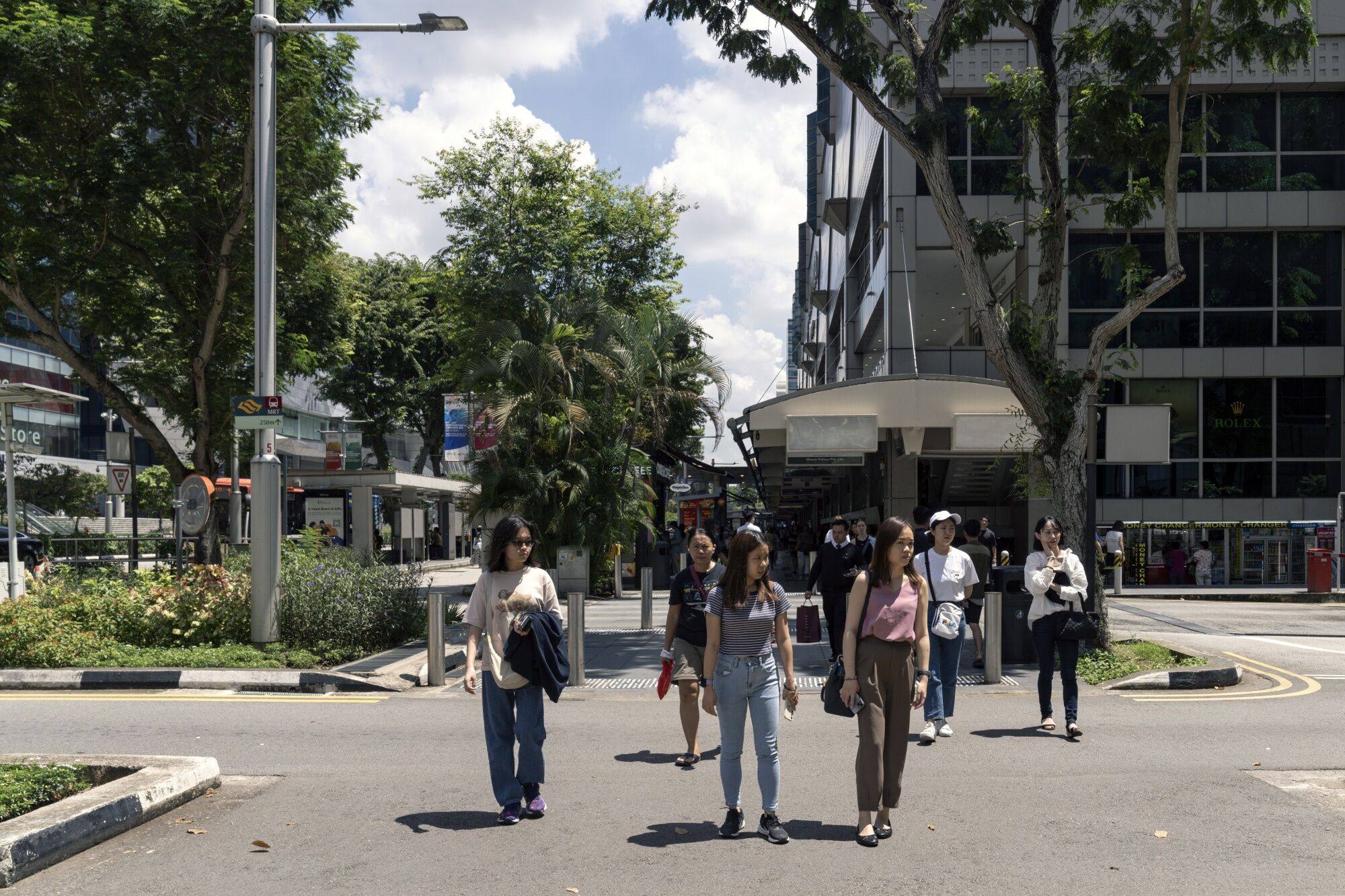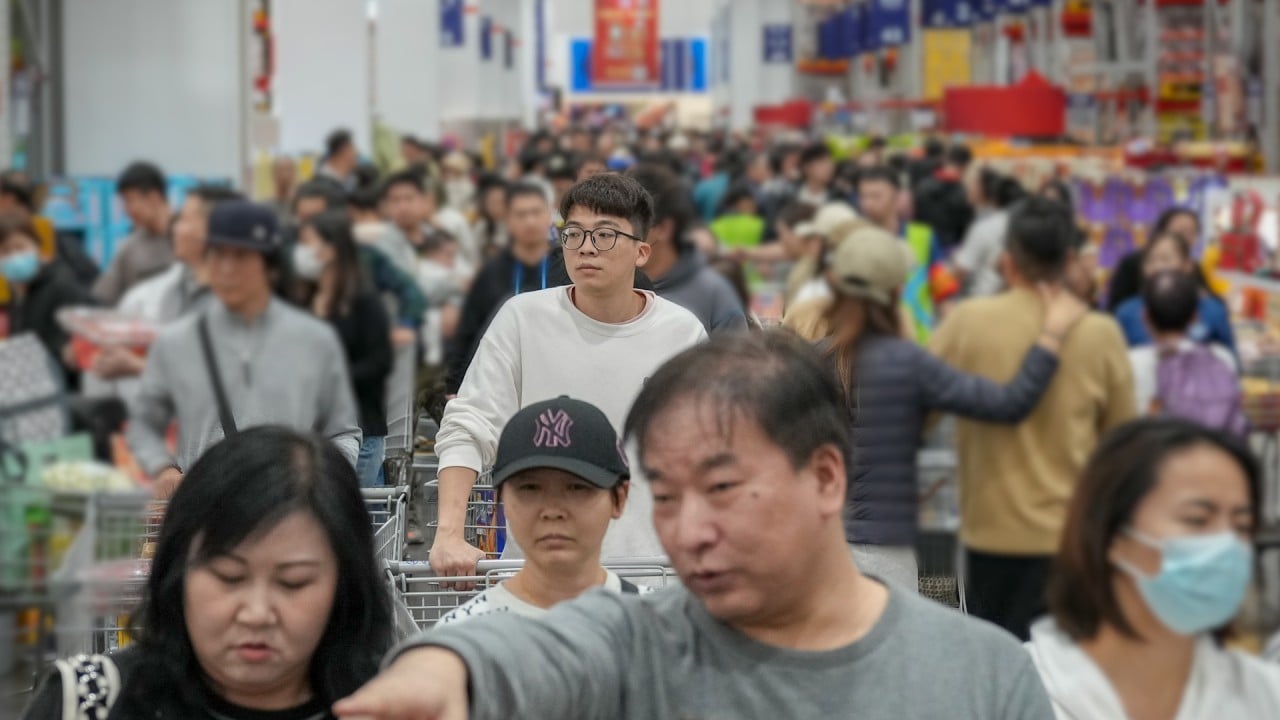Earlier this year, the peg was the envy of policymakers across the region as the Hong Kong dollar was the only major currency in Asia to withstand the surge in the US dollar stemming from the disruptive repricing of expectations of cuts in US interest rates.
Yet what is good for financial stability in Hong Kong has proved detrimental to the competitiveness of the city’s retail industry. The yuan has fallen to levels against the Hong Kong dollar last seen in 2008, and the Japanese yen is at its weakest level since 1990.
Such unfavourable exchange rate movements are particularly damaging in a city with two of the world’s most expensive retail districts. According to a survey by Cushman & Wakefield, even after their steep declines since 2014, average annual rents in Tsim Sha Tsui and Causeway Bay were the highest and second highest in Asia in 2022-23.
This is one of the reasons retail sales in Hong Kong remain sharply below pre-pandemic levels. In April, they contracted at an annualised rate of 14.7 per cent, with declines across all major categories. While a high base effect and wet weather did not help, JPMorgan notes that “consumption and retail sales are not that competitive in terms of prices”.
This is an understatement. The strength of the Hong Kong dollar has exacerbated a divergence in inbound and outbound tourism that is unlikely to narrow any time soon. Incentives abound for Hongkongers to flock to the mainland – especially for those living in areas near the border with Shenzen – from cheaper groceries to a wider selection of offerings and entertainment choices.
Public holidays and long weekends, normally a boon for retailers, have become a source of anxiety for the city’s landlords and tenants. “They’re really worried about long holidays. The longer the holiday, the greater the desire to travel,” said Kevin Lam, head of retail services at Cushman & Wakefield in Hong Kong.
According to data from CBRE, rents for high street shops in core areas of the city are still growing but have experienced a slowdown in recent quarters. Growth in new leasing volumes has also moderated.
Across the border, however, a more sophisticated and innovative retail industry has captured an increasing amount of Hong Kong consumer spending. Although cheaper prices are the main draw, the operational models and brand mix of shopping centres in China’s biggest cities have improved dramatically, presenting a competitive threat to Hong Kong shopping centres across “the whole experience journey,” JLL notes.
Hainan, which is set to become fully duty-free next year, poses an additional threat. According to the results of a 2023 survey by Oliver Wyman, most mainland luxury shoppers view Hainan as the top destination for high-end purchases.
The cyclical and structural challenges facing Hong Kong’s retail sector come at a time when other retail markets in Asia have emerged as bright spots for investment, partly because of attractive rental yields. Australian shopping centres are benefiting from rapid population growth and tight supply, and Singapore’s retail sector is attracting significant investment as the government rejuvenates the city state’s prime shopping district.

Still, it is not all doom and gloom for Hong Kong. High street shop vacancy rates in all four core districts have fallen to single-digit levels, the first time since the second quarter of 2018, according to data from CBRE. Moreover, the government recently scrapped cooling measures in the housing market and is taking steps to boost the city’s tourist appeal.
It is also important to put things in perspective. The unique strengths of Hong Kong’s mature and culturally vibrant retail market persist. In the Oliver Wyman survey, Hong Kong was the second-most popular destination for mainland luxury shoppers and the preferred one for jewellery and watches. The city also had a clear edge over Hainan when it came to the shopping experience.
Barrie Chan, senior director, retail, at Savills in Hong Kong, said the city had “a well-developed retail ecosystem”. The surge in outbound tourism is a fillip to the integration of the Greater Bay Area that could ultimately benefit Hong Kong, attracting more mainland Chinese brands as the city’s role as a driver of consumer demand in the region becomes more apparent. “In the long run, it could help us better position ourselves,” Chan said.
The short-term outlook is bleak, however. US interest rates might not come down for some time, keeping the Hong Kong dollar strong. The retail industry’s ability to differentiate itself by providing an experiential offering that appeals to domestic consumers and tourists alike is in doubt. The challenges facing Hong Kong’s retail sector keep piling up.
Nicholas Spiro is a partner at Lauressa Advisory


